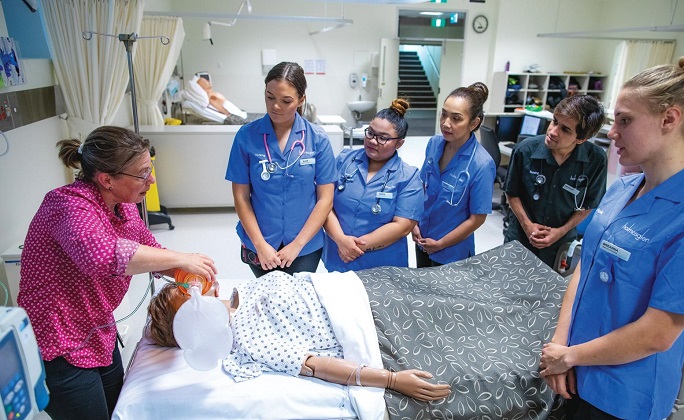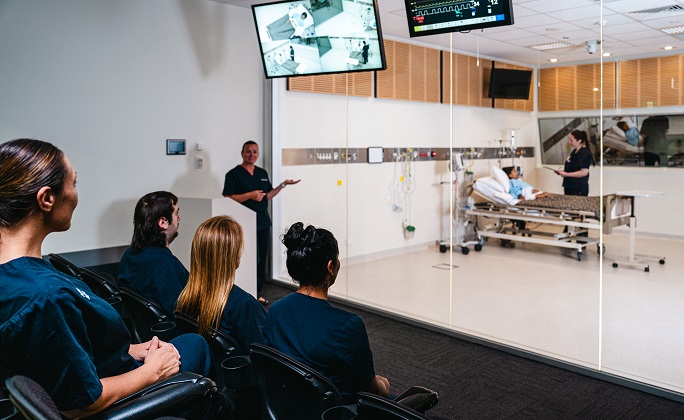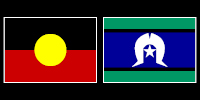Nurses also work in a variety of healthcare settings and across many different roles. This gives you a range of nursing career options to consider. For example, you can work as an orthopaedic, general practice, aged care or cardiac nurse.
A day in the life of a nurse

Nurses perform some of the most essential jobs in society, particularly in the current environment while the community adjusts to pandemic experiences. As they support people at their most vulnerable, they are required to show compassion and treat all patients with dignity and care.
How do I become a nurse?
At Holmesglen, the nursing courses we offer are the two nationally accredited qualifications needed to be a nurse in Australia.
These are a diploma in nursing and a degree in nursing.
The qualification needed to be an Enrolled Nurse is the HLT54121 Diploma of Nursing. After you complete the HLT54121 Diploma of Nursing, you will be able to register as an Enrolled Nurse with the Nursing and Midwifery Board of Australia (entry level criteria apply).
To become a Registered Nurse, you must complete a Bachelor of Nursing. This Degree in Nursing prepares students for a rewarding career in professional nursing and combines in-depth theory with extensive clinical placements in real healthcare settings.
You can enrol as a first-year student, or transition to the second year of the Bachelor of Nursing via Holmesglen's Diploma of Nursing (entry level criteria apply). This Degree in Nursing runs for three years fulltime. Graduates are highly sought after by employers for their expertise in delivering quality, patient-focused care and their readiness to tackle the complexities of modern healthcare.
What are the differences between an Enrolled Nurse and a Registered Nurse?
An Enrolled Nurse will primarily work as part of a team. While responsible for their own work, they will not personally oversee the management of patient plans.
An Enrolled Nurse primarily “assesses, plans and implements nursing care for patients” and “provides interventions, treatments and therapies, such as administering medications.” Enrolled Nurses work under the supervision of a Registered Nurse, according to the Victorian Skills Gateway.
A Registered Nurse has received their degree and has more responsibility in a healthcare environment. They often work independently and may also supervise Enrolled Nurses. If you graduate from Holmesglen’s Bachelor of Nursing, you are eligible to apply to the Nursing and Midwifery Board of Australia as a Registered Nurse. Entry level criteria apply.
What does an orthopaedic nurse do?
Orthopaedic nurses help patients with musculoskeletal conditions. These nurses assist with:
- dressings and casts
- managing a patient’s pain
- supporting patients following surgery
“A typical day for me on the orthopaedic ward starts with a central handover and then we go to bedside handover. I then make up my planner and begin doing my observations and medication rounds. After that, a shift will consist of either showering patients, daily life activities for patients, rounding out paperwork and taking patients to, or collecting them, from theatre. I do all my notes as I go during a shift and some days, we have education sessions that we attend.” – Marilyn, orthopaedic nurse
What does a general practice nurse do?
General practices nurses perform a variety of tasks. These include:
- patient assessments and referrals
- helping administer vaccinations
- working closely with general practitioners
"It's a mixed variety of work. From educating patients on their health, creating care plans for individuals, and administering immunisations to children and adults. We also offer blood tests, wound care, plastering of limbs, iron infusions and ear syringing just to name a few.” – Melissa, general practice nurse
What does an aged care nurse do?
Aged care nurses offer care and dignity to older people. Some of their key tasks include:
- administration responsibilities, such as admissions
- palliative or dementia care
- administering medication, under the supervision of a Registered Nurse if you are an Enrolled Nurse
- administering medication if you’re a Registered Nurse
“Even though there are routines to follow, no two days are the same. Tasks required are assigned for different shifts, but this also varies depending on the facility where you work. I have worked at three different facilities and the tasks required have all been different. However, they all require care of the residents, which includes feeding and attending to their hygiene. There is always some sort of documentation required and this will also be different depending on the facility.” – Sonja, aged care nurse
What does a cardiac care nurse do?
Cardiac care nurses help patients with heart conditions. Their roles include:
- helping with a patient’s treatment plans
- supporting a patient’s recovery after surgery
- working closely with cardiologists
“My shift can involve looking after patients post angiograms, ablations, pacemakers, electro-physiology studies. It also includes getting patients ready for open heart surgery, picking patients up from emergency, and looking after patients with cardiac failure.” – Alexandria, cardiac care nurse
Find out what you can achieve with a nursing qualification at our courses page.



